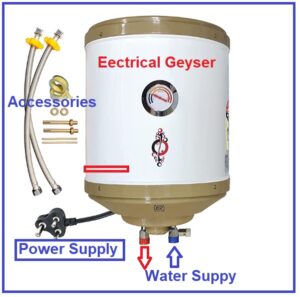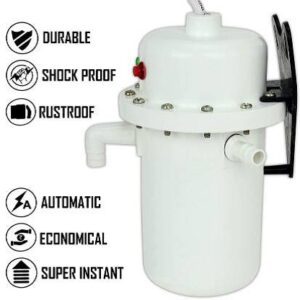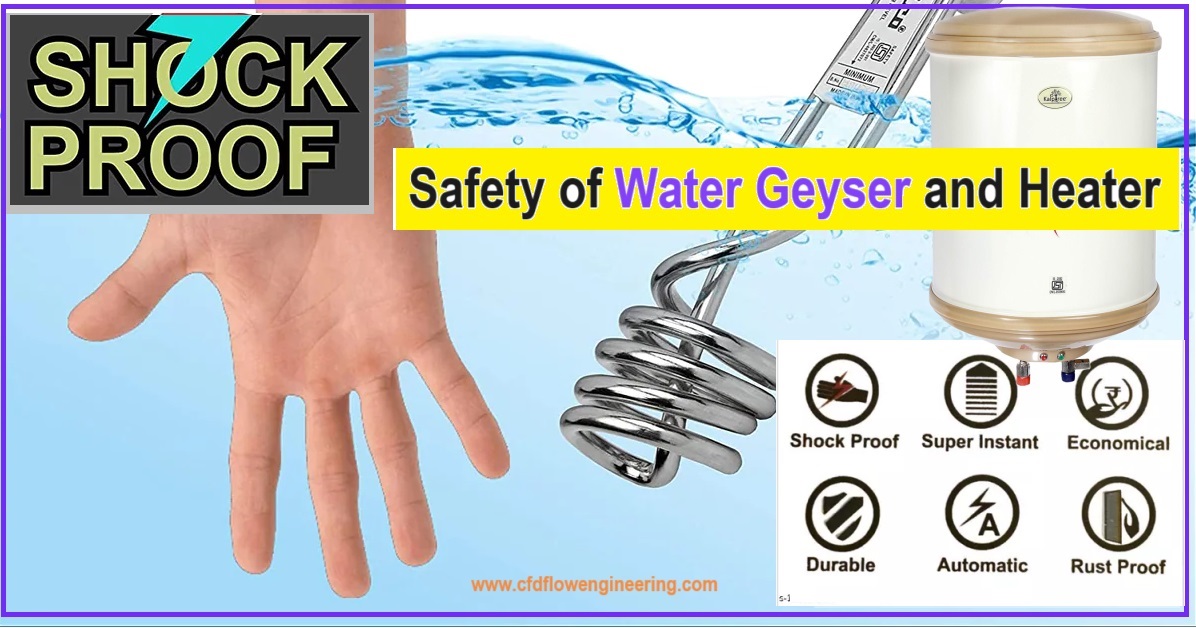Best Safety Tips For Geyser
- Installing a shockproof water geyser involves careful planning and execution to ensure the safety of both the installation process and its subsequent use.
- Shockproof water geysers are designed with safety in mind, protecting against electric shocks.
- Most geysers are equipped with advanced insulation and safety features to ensure a secure and worry-free experience
- Here are some safety tips for installing a shockproof water geyser:

Consult a Professional:
- If you’re not experienced with electrical or plumbing work, consider hiring a licensed professional to install the water geyser.
- They have the expertise to ensure a safe installation.
Choose the Right Location:
- Select a well-ventilated and dry location for the water geyser installation.
- Avoid areas prone to moisture or flooding.
Follow the Manufacturer’s Instructions:
- Read and understand the manufacturer’s installation instructions thoroughly before beginning the installation process.
- Adhering to these guidelines ensures proper installation and safety.
Ensure Proper Electrical Wiring:
- Use the correct gauge of electrical wiring and ensure that it is properly grounded according to local electrical codes.
- Improper wiring can lead to electrical hazards and shock risks.
Use GFCI Protection:
- Install a Ground Fault Circuit Interrupter (GFCI) for the electrical circuit powering the water geyser.
- A GFCI helps prevent electric shocks by quickly shutting off power in the event of a ground fault.
Check Water Quality:
- Before installation, assess the quality of the water supply.
- If the water is corrosive, consider installing a sacrificial anode rod in the water geyser to protect it from corrosion.
Securely Mount the Geyser:
- Use sturdy mounting brackets and hardware to securely attach the water geyser to the wall or support structure.
- Ensure that it is level and stable to prevent accidents.

Install a Pressure Relief Valve:
- Install a temperature and pressure relief valve as per the manufacturer’s instructions.
- This valve helps prevent the tank from overpressurizing and reduces the risk of explosions or leaks.
Insulate Hot Water Pipes:
- Insulate hot water pipes connected to the water geyser to prevent heat loss and reduce the risk of accidental burns.
Test the Installation:
- Once the installation is complete, thoroughly test the functionality of the water geyser, including the thermostat, pressure relief valve, and heating elements. Address any issues promptly.
- Provide Adequate Ventilation:
- Ensure that the installation area has adequate ventilation to prevent overheating of the water geyser and surrounding components.
Label Emergency Shut-off Switches:
-
- Clearly label emergency shut-off switches or breakers for the water geyser.
- Ensure that they are easily accessible in case of emergencies.
Educate Users:
-
- Provide instructions and educate household members on the safe operation of the water geyser, including proper temperature settings and maintenance practices.

Causes of Shocks in Immersion Water-Heater
- Electric shocks associated with immersion water heaters can occur due to various factors, often involving electrical issues.
- Here are some common causes of shocks in water heaters:
Faulty Wiring:
- Poorly installed or damaged electrical wiring can lead to electric shocks.
- This includes issues like exposed wires, loose connections, or improper grounding.
Lack of Grounding:
- If the water heater is not properly grounded, there is an increased risk of electric shocks.
- Proper grounding provides a pathway for electrical currents to flow safely to the ground.
- If a water heater is not equipped with a GFCI or if the GFCI is faulty, the risk of electric shocks is higher.

Damaged Power Cord or Plug:
- A damaged power cord or plug can expose wires and lead to electrical shocks.
- Regularly inspect the power cord and plug for signs of wear, fraying, or damage.
Corrosion:
- Corrosion of electrical components within the water heater, such as heating elements or wiring, can compromise their insulation, increasing the risk of electric shock.
Water Leaks:
- Water leaks into electrical components can create a dangerous situation.
- Water is a good conductor of electricity, and when it comes into contact with live electrical parts, it increases the risk of shocks.
Poor Installation:
- Incorrect installation of the water heater, including improper wiring, inadequate grounding, or neglecting safety measures, can contribute to electric shocks.
Age and Wear:
- Over time, the electrical components of a water heater may degrade due to age and wear.
- This can include insulation breakdown, corrosion, and other issues that increase the likelihood of shocks.
Poor Maintenance:
- Lack of regular maintenance may result in the accumulation of debris, sediment, or corrosion within the water heater, affecting its electrical components and safety features.
Conclusion
- To prevent electric shocks associated with water heaters, it is crucial to ensure proper installation, regular maintenance, and prompt resolution of any electrical issues.
- If you experience problems or suspect electrical hazards with your water heater, it is recommended to seek the assistance of a licensed professional for inspection and repairs.
